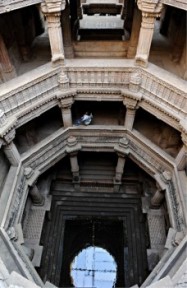 On the occasion of World Earth Day, we bring you excerpts from the writings of Vishwanath Srikanthaiah who is at the helm of the water-conservation movement in Karnataka.
On the occasion of World Earth Day, we bring you excerpts from the writings of Vishwanath Srikanthaiah who is at the helm of the water-conservation movement in Karnataka.
In his own words, ” I am part of the Rainwater Club and we work on preliminary rainwater harvesting, that is, to collect rain when it falls anywhere and to put it to productive use. That is my job.”
His dream is to see that the rivers, lakes and tanks are brought back to crystal-clear health with no sign of contamination so that, ” our children can swim and the bio-diversity can flourish.”
He wrote once, ” Life is a network and we need to accept that human kind cannot survive alone on this planet. The well-being of all the bio-diversity is critical for our survival so we need to be concerned as much about insects, birds and fishes as we are about ourselves. If they are taken care of, we are taken care of. Water is the fundamental essence of life and we must treat it with respect and understand that without water, there cannot be life on earth.”
This post we are sharing with you was written by him, sometime back.
“The open well is one of the oldest hydraulic inventions of mankind dating back to the Harappan civilisation and beyond. In Sarnath, Uttar Pradesh, there is a well which is over 2,300 years old and still has water in it. In Dholavira, Gujarat, beautiful old open wells lined with brickwork still exist.The well has provided humankind with life-giving water but somehow lost its way with the advent of the borewell and the pumping technology.
In Bangalore, on the outskirts and in places where there used to be old tanks, open wells still exist and provide water. Open wells extract water from the annually replenished dynamic water table. This is rainwater percolating through the soil layers and reaching the aquifer.
Open wells talk to us and communicate many things about the natural resource called water. They tell us that summer is approaching with the lowering of the levels of water and therefore we must use water sparingly.
They tell us about years of plenty when the rainfall has been sufficient to fill them to the brim. They last for centuries and have actually been designed and crafted to be works of architecture in many places. With modernisation and the coming of technologies, these signals unfortunately have been lost. The modern consumer of water (which comes in taps) has no knowledge of the source of the water or whether it is running out.
Be it from a surface water source such as a river or a dam on the river or even deeper groundwater sources such as borewells, there is no information for a wise ecological decision since one is unaware of the quantum of water available.
In a city where the poor are not connected to the piped network, it is groundwater sometimes from open wells which provides a service for free. The well has social equity built into it. In modern times, the well can take on a dual role. While in the past, it was meant to draw water only from the ground, now as a recharge well, it can put back filtered clean water into the earth and the aquifer during times of rain.
This water can then be drawn in non-rainy times. Rainwater harvesting technologies provide for such a dual measure for the wells. In a city, one needs to ensure that wells are incentivised and protected particularly from pollution through sewage leaks. Wells also need to be covered and protected for safety reasons and to avoid the dumping of garbage into them, a regrettable but common practice when they go dry.
The culture of the well is one of sustainability and equity. It is about limited use of a scarce resource and about replenishing what we take from nature. A well or wells can be beautifully and aesthetically incorporated into any development from a small home to a large apartment.
They can take care of all rainwater on site by recharging them into the ground and if the aquifer permits, can allow for water to be drawn when required. The best time for making one is now, since the rains are only some months away.
That would be the path to water wisdom.”
For more information
www.rainwaterclub.org
zenrainman@gmail.com





